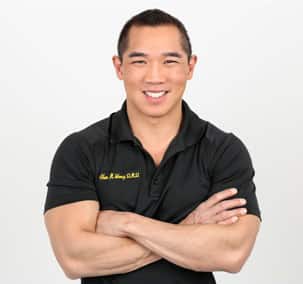Life with Braces: A Survival Guide to Eating and Oral Hygiene
- July 31, 2024
- Posted by: Dr. Alan Wong
- Category: Braces
Getting braces is an exciting step toward achieving the perfect smile you’ve always wanted. However, the fact is that braces do bring new challenges, especially when it comes to eating and maintaining oral hygiene. This is why it’s crucial to understand the types of food that are safe to eat with braces to avoid damaging the brackets and wires. From soft fruits and steamed vegetables to avoiding sticky candies, navigating the right food choices can keep both your braces and teeth in good shape.
Foods to Avoid
Some foods can harm your braces, as they can be too hard, sticky, or chewy. Hard foods like nuts, popcorn, or hard candies can break brackets and wires, while chewy and sticky foods like caramel and gum can get stuck in your braces. They can cause your braces to be hard to clean and also lead to tooth decay.
Remember to cut crunchy fruits and vegetables like apples and carrots into smaller pieces so you don’t damage your braces. Also, avoid chewy breads like bagels and tough meats that can put extra tension on your brackets.
Stick to softer options like yogurt, cheese, and cooked vegetables for easier consumption and better dental health.
Mastering Your Oral Hygiene Routine
Brushing Techniques With Braces
It’s more challenging to brush your teeth effectively with braces, so be prepared to make some adjustments to your brushing techniques. First, you will need the right type of toothbrush. Opt for a soft-bristled toothbrush or an electric toothbrush with a small head. When brushing your teeth, angle the brush at 45 degrees to clean along the gumline and then reach around the brackets and wires at different angles.
Don’t rush through your brushing routine. Take your time, around two minutes, to ensure that every tooth is properly cleaned. A fluoride toothpaste helps strengthen enamel, so it’s a good option.
For hard-to-reach areas around the brackets, you may want to consider interdental brushes or proxy brushes. At all times, be gentle to avoid damaging your brackets and wires.
Flossing Made Easy
Flossing can be tricky with braces but don’t skip it, as it’s crucial to prevent plaque buildup.
To make it easier to maneuver floss under the wires, use dental floss threaders. Use about 18 inches of waxed dental floss and insert the floss threader under the wire before gently flossing between your teeth. Move up and down carefully to avoid damaging your braces.
Other tools include orthodontic flossers, which are designed to navigate around braces. Water flossers can also be a good investment, as they use water pressure to clean between teeth and braces more easily.
Rinsing and Using Mouthwash
Rinsing your mouth is an easy and effective way to remove food particles and bacteria. After brushing and flossing, use a fluoride mouthwash to help strengthen enamel and prevent cavities.
Swish the mouthwash around for 30 seconds to 1 minute and spit it out. Avoid eating or drinking for at least 30 minutes afterward to allow the fluoride to act fully.
Regular saltwater rinses can also soothe any irritation caused by braces. Mix a teaspoon of salt with warm water and rinse for about one minute.
Make Life With Braces Easier With Modern Orthodontics
Adjusting to life with braces can be challenging at first, but don’t let the obstacles of braces overshadow the incredible outcome that’s waiting for you. By following these tips, anyone can navigate life with braces more comfortably and effectively.
Just remember to make good food choices that are better for your braces and teeth while maintaining good oral hygiene throughout your treatment. At Modern Orthodontics, we’re here to help and guide you through your journey with braces, so call us today to schedule an appointment with us!

Dr. Alan Wong is a dedicated orthodontist who loves helping his patients achieve healthy, beautiful smiles. He is committed to providing gentle, effective care in a patient-centered environment. Dr. Wong is also a strong believer in continuing education, so he can provide his patients with the latest and greatest treatment options.
